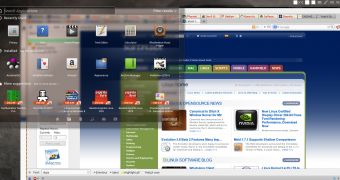After Canonical announced they are building their own display manager to replace X and to squash the Ubuntu dreams of Wayland fans, they also announced Unity Next, a new session-level shell implementation build on Qt and QML.
When Unity was first introduced back in 2010, people didn't like it. It caused an uproar and a lot of users were not ready to adopt a new way of navigating the operating system.
[admark=1]The protests have died down and Unity has become an important part of the infrastructure, allowing the company to build Ubuntu for Phones around this concept.
“The Unity Next project is the logical evolution of what was started for the desktop, transitioned to the TV and propagated for the phone and the tablet. It unifies the efforts spent on Unity in general and aims for convergence into one deliverable for all form factors: phones, tablets, TV's and desktop,” stated the official announcement.
Canonical has assured us that the core concept of the shell will not change and will provide the same functionality and you won't be able to tell it apart from the old version.
The old Unity and the one in use today on desktops was built on Nux, but the new one will share the code with Unity for phones and tablets, which is actually developed on Qt and QML (Qt Modeling Language).
“With this particular shift in focus to Qt, it provides an opportunity to also revisit our approach to window management and composition. On our Ubuntu Touch Developer Preview we have initially relied on some modifications to the Android facilities. However a solution is needed to fulfill our Unity Next "look and feel" requirements across all devices, phone to desktop to TV,” says Canonical in their Unity Next wiki.
If everything goes according to plan, a complete seamless transition between Ubuntu for desktops and Ubuntu for Phones will be done in the next LTS release, in 2014. Until then, Canonical will be bashed again for their intentions about Unity and Mir, the X display manager replacement.

 14 DAY TRIAL //
14 DAY TRIAL //